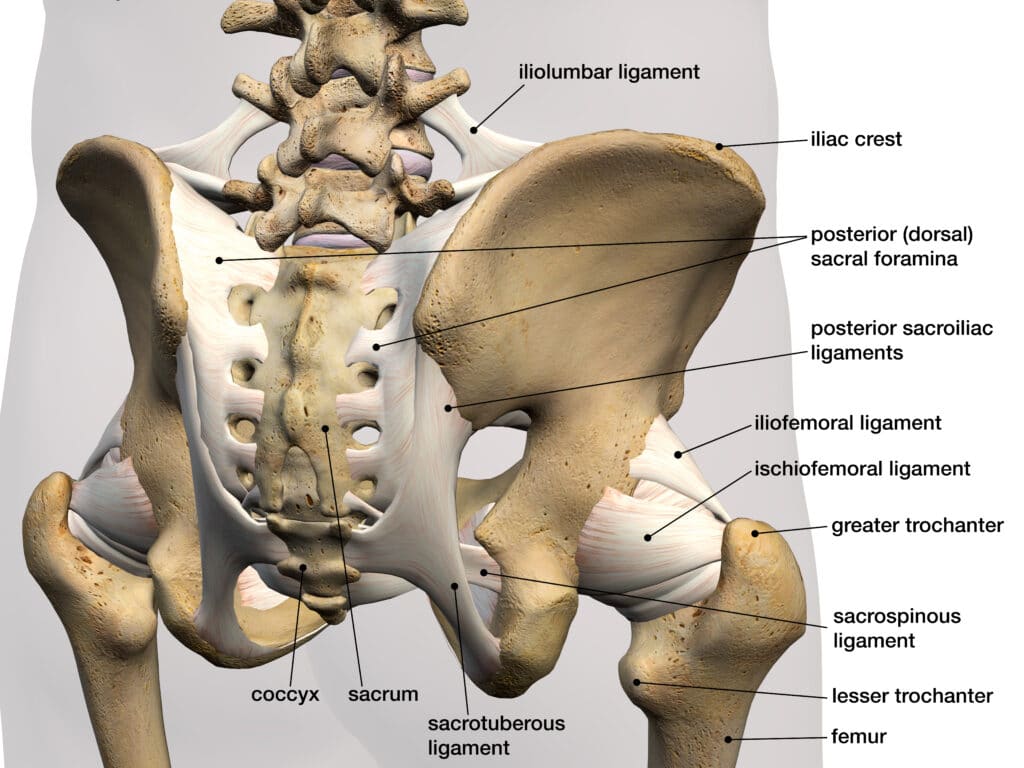Is My Lower Back, Buttocks or Leg Pain From Piriformis Syndrome?
Lower back pain is one of the most common complaints among adults, with 25% of U.S. adults reporting acute lower back pain and 8% of all adults experiencing chronic or persistent back pain. Lower back pain can radiate through the buttocks and down the leg, depending on its cause. One such condition? Piriformis syndrome.
What is piriformis syndrome?
Piriformis syndrome (PS) or deep gluteal syndrome is a rare neuromuscular condition that affects less than 200,000 people per year in the U.S. Commonly confused for or associated with sciatica, PS is also called pseudosciatica, hip socket neuropathy and wallet neuritis – however, wallet neuritis often occurs without other PS symptoms.
The piriformis muscle starts at the front of the sacrum and attaches to the femur (thigh bone) at the outermost part of the hip joint. This muscle flat functions as an external rotator of the hip – meaning it helps turn the hip outward and rotate the thigh and bent knee away from the body (i.e., when getting out of a vehicle or a chair) – and provides stability for standing, walking and running.
This painful condition occurs when the piriformis muscle in the buttocks presses on the adjacent sciatic nerve at the ischial tuberosity (aka the “sit bone” at the base of the pelvis).
Sciatica vs. Piriformis Syndrome
Piriformis syndrome is frequently misdiagnosed as sciatica, accounting for 6% to 36% of cases. Irritation or inflammation of the piriformis muscle impacts the sciatic nerve, triggering sciatica-like pain.
Sciatica occurs when the sciatic nerve is compressed by a herniated disk, a narrowing of the spine (spinal stenosis) or a bone spur on the spine. To put it simply, sciatica refers to an injury to sciatic nerve along the lumber spine (lower back) and piriformis syndrome occurs when injury, irritation or overuse of the piriformis muscle causes swelling and tightness that compresses the sciatic nerve.
Piriformis Syndrome Symptoms & Pain Pattern
The piriformis syndrome pain pattern typically starts with early signs and symptoms, followed by later ailments. All PS symptoms typically present on one side of the body.
Early PS Symptoms
- Pain, tenderness or a dull ache on one side of the buttocks
- Numbness and tingling (pins and needles) of the buttocks
- Low back pain (mimics sciatic pain)
Later PS Symptoms
- Pain extending from the buttocks, down the sciatic nerve, as far as the foot
- Severe, piercing buttock pain and/or leg pain and spasms
- Low body pain that is so severe it’s disabling
General Piriformis Syndrome Symptoms
- Muscle spasms in the piriformis muscle
- Difficulty and pain when sitting or putting weight on the affected buttock
- Pain gets worse while sitting, running, walking up stairs or biking
Common Causes & Treatment Options

Typically, the sciatic nerve runs directly under the piriformis muscle and continues down the back of the thigh. Some people’s sciatic nerve, however, runs through the piriformis muscle, making them much more prone to PS. This is considered primary piriformis syndrome. For unknown reasons, piriformis syndrome affects more women than men.
Secondary piriformis syndrome is much more common than primary PS and is caused by trauma, muscle spasms and inflammation of the soft tissues of the muscle. Additionally, overuse that results in injury, swelling or the gradual tightening of the piriformis muscle is also very common.
Typical PS causes and risk factors include:
- Sitting for long periods of time
- Lifting heavy objects and/or weightlifting
- Repetitive activities (including long-distance running, walking and climbing stairs)
- Over exercising
- Poor muscle fitness
Exercises & Treatment
PS can usually be treated with self-care and at-home exercises.
- Avoid activities that trigger pain
- Alternate ice packs and heating pads on the affected area
- Take nonsteroidal anti-inflammatory drugs (NSAIDs) such as aspirin, ibuprofen etc.
- Maintain proper posture when sitting, standing and driving
- Hip mobility exercises
- Exercises to strengthen the hip abductors
- Physical therapy
If these conservative treatments are not affective, your orthopedic specialist may prescribe corticosteroids with a local anesthetic. In rare cases, piriformis syndrome surgery may be performed to remove a portion of the piriformis muscle to provide pain relief in refractory cases.
If you’re experiencing sciatic pain or believe you may have piriformis syndrome, diagnosis by an orthopedic hip specialist can help you get on the road to recovery. If you have any questions for our orthopedic surgeons or would like to schedule an appointment, please contact us.

Leave a Reply